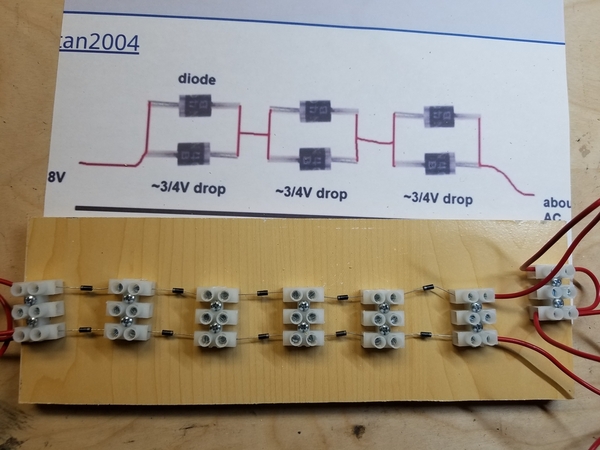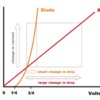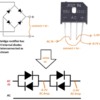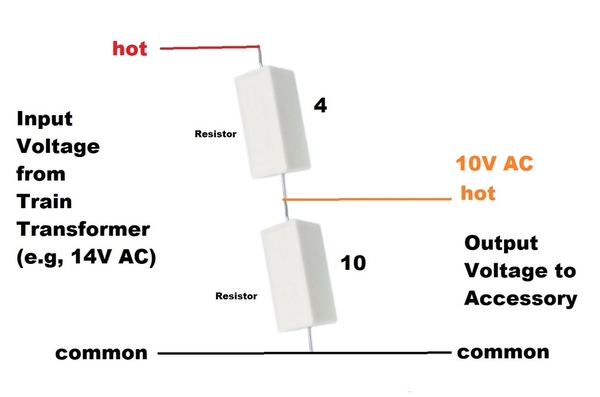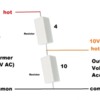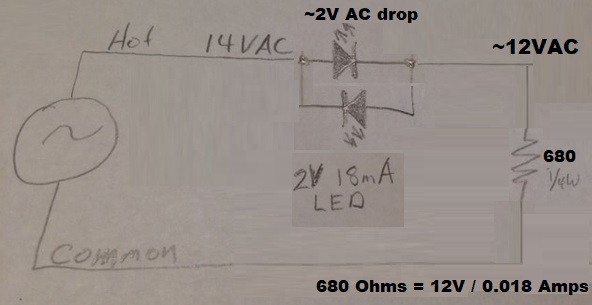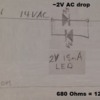This will no doubt be Too Much Information, but here's are some photos and diagrams from earlier OGR threads that may peel a few more layers of the onion...
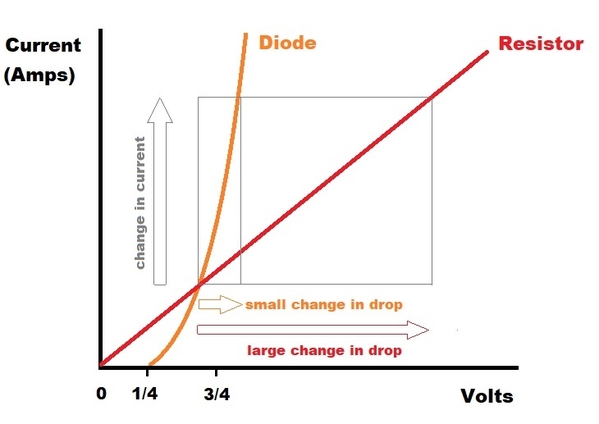
For the purposes of dropping voltage, components like resistors and diodes have a well defined relationship between current (Amps) and voltage (Volts). A resistor is simplest to explain...the voltage drop is exactly proportional to the current flowing thru the resistor. Double the current, double the drop. Triple the current, triple the drop. This "straight-line" relationship is shown as the Red line.
A diode has what is often referred to as a hockey-stick relationship (Orange curve). In a relatively small zone around 3/4 Volts, you can double, triple, quadruple the current and the voltage drop stays relatively constant. To be sure, it changes, but nothing like a resistor. I attempted to show this in the diagram... with the same change in current, the voltage drop thru a diode is relatively small vs. the voltage drop thru a resistor.
A specific example helps. As I understand it, the Dispatch Board has a light that is always on. Then you trigger the accessory and some motor or whatever moves the figure. So the current changes from lights-only to lights + motor. With a resistor as the dropping device, the additional current when triggered would effect a larger drop and the accessory would see less voltage than with just the light on. The lights would dim...and I'd think quite noticeably. To be sure, with the diode method, the voltage drop will change a bit...and you may even see some dimming, but nothing like that with a resistor. Additionally, with the diode method, you don't have to fuss with "stocking" a variety of resistors or using somewhat spendy variable resistors (aka rheostats). And in case not obvious, it's the relatively recent (in the long history of O-gauge) availability of 5 or 10 cent diodes that makes the diode dropping method practical vs. the variable resistor method.
As an aside, suppose the OP had used a resistor or rheostat (instead of diodes) and attempted to adjust the voltage drop with JUST a meter attached. This would have been quite the head-scratcher since there would have been zero measurable drop. No current, no drop!
Enough about that. On to implementation.
Good catch on the wiring. In my diagram I show each pair of diodes joined back-to-back. The OP shows the 5 upper diodes in a string (in series) only joined at the ends to the 5 lower diodes in a string. This will behave/perform the same. Note that in the OP's wiring photo, with the terminal strip method used for interconnections, I believe his method always results in less wire cutting/stripping. So what's the back story?
Again, here I go again opening the information floodgates  :
:
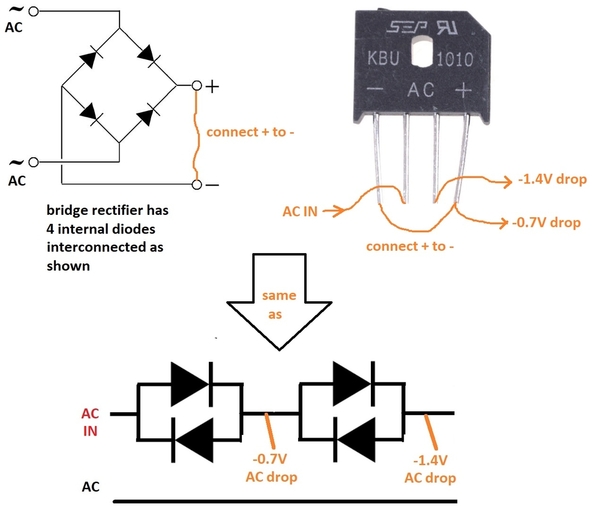
As it turns out, you can buy so-called bridge-rectifiers which are 4 diodes packaged in a way that makes it useful for AC to DC voltage conversion. But with a simple "trick" a bridge rectifier can be put into service as an O-gauge voltage-dropper!
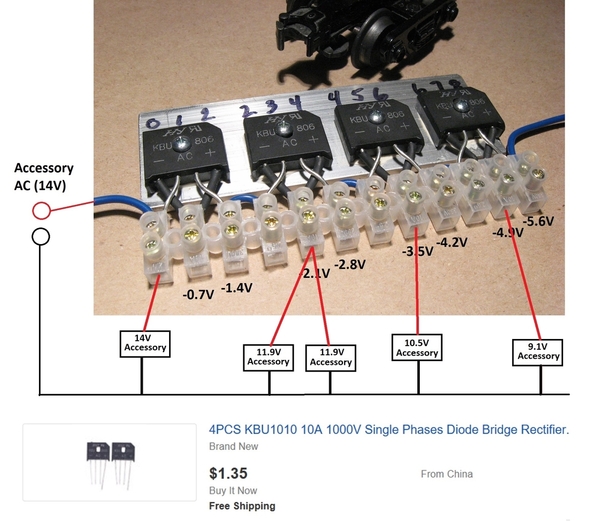
Above shows a recycled OGR photo where I assembled 4 bridge rectifiers (8 pairs of diodes) in a voltage dropping configuration. In this case I used relatively high current bridge rectifiers (10 Amps) to show how the diode dropping method can be used to simultaneously power multiple accessories that have differing voltage needs. This multiple tap method requires each pair of diodes wired back-to-back rather than only once on each end of the overall string; I hope this makes sense!
I now cease and desist. 
